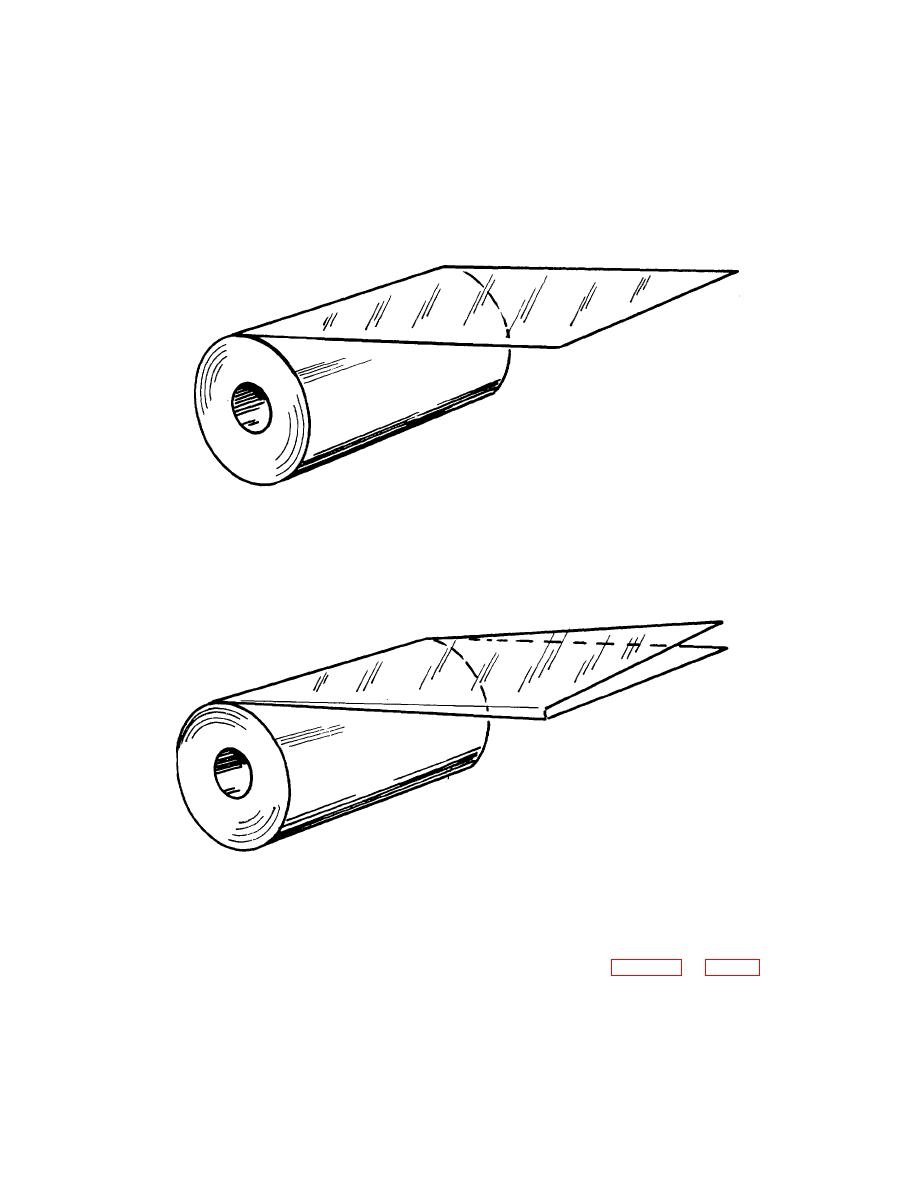 |
|||
|
|
|||
|
|
|||
| ||||||||||
|
|
 TM 38-400/NAVSUP PUB 572/AFMAN 23-210 MCO 4450.14/DLAM 4145.12
(g) Rubber hydrochloride.
shrink-film surface area is approximately 10 percent
greater than the surface area of the palletized load.
d. Shrink-film characteristics.
Shrink tension is thus applied after this 10 percent has
(1) Because
of
its
performance
been shrunk to fit the contour and allows the film to
characteristics and low cost, polyethylene film is the
become a structural part of the package.
most widely used. The ability to stabilize heavy loads
becomes apparent when it is realized that the applied
Figure 3-60. Flat sheeting.
The film shrinkage can be controlled in two directions,
(2) In film production, controlled stretching
either in the circumferential direction or height of the
builds stress characteristics into the film. Heating the
load.
film releases the built in stresses causing it to shrink.
Figure 3-61. Centerfold sheeting.
(3) Thickness of polyethylene shrink film
elasticity of film, makes it an outstanding containing
used varies, depending on the restraint requirements.
medium.
Most industrial applications use film 2.5 to 8 mils thick.
(4) Shrink-film bags can be either centerfold
The ability of film to stabilize a heavy load is easy to
or gusseted types (figs 3-62 and 3-63). The centerfold
visualize when one realizes that a restraining force of
bags are rolled, sealed, and perforated from centerfold
2,000 PSI sometimes occurs over the entire area of the
film and have their primary shrink around the
load surface. This factor, together with the inherent
circumference of the load. This type of
3-89
|
|
Privacy Statement - Press Release - Copyright Information. - Contact Us |